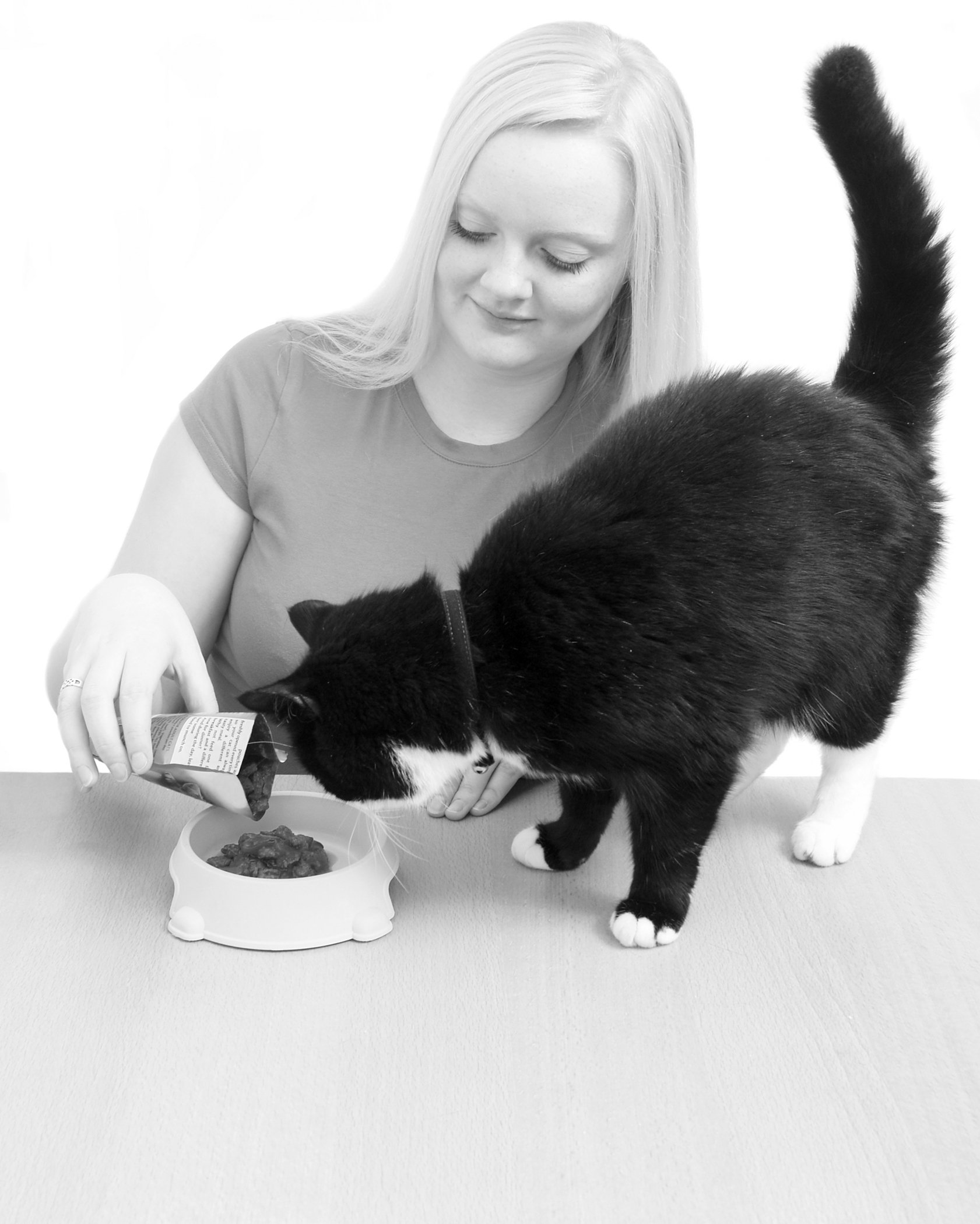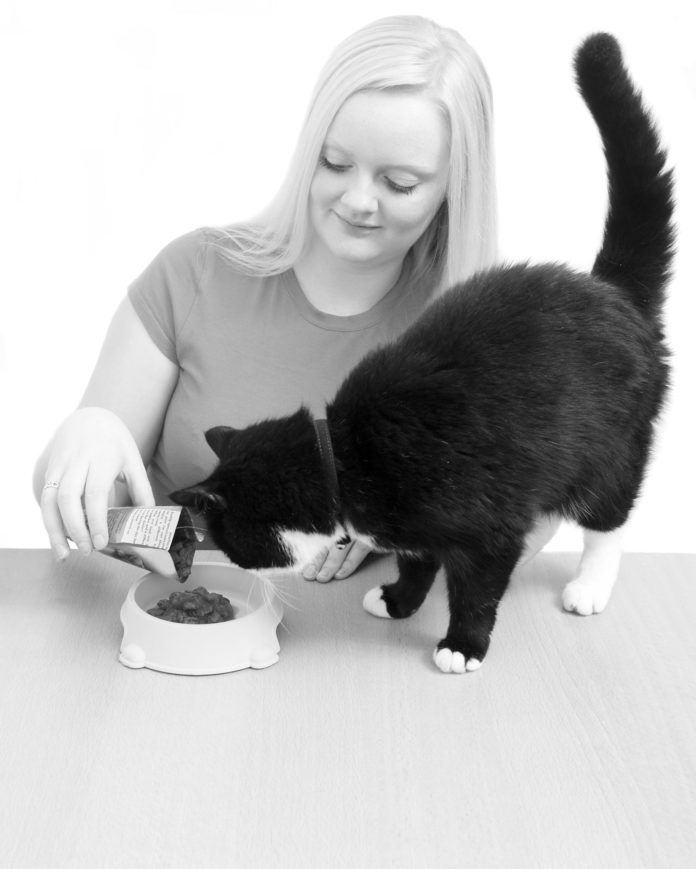
Your cat may have a suspected allergy, so you’re looking for a special diet to try to help her. But what kind of diet do you need? You’ve read that it’s all about the protein in the ingredients, which can trigger the immunological over-reaction — an allergy.
Meat Protein is a Common Cat Allergy
“Animals become allergic to proteins that are in their routine diets,” explains Cailin Heinze, MS, VMD, an assistant professor in the Department of Clinical Sciences at Tufts Cummings School of Veterinary Medicine. “Almost every food has protein in it —even white potato.” The most common allergy sources reported in cats are meats, but a cat can actually be allergic to anything that has protein in it.
If your cat has signs that may signal an allergy — skin problems that aren’t related to fleas or environmental allergies, or digestive problems such as chronic diarrhea or vomiting that doesn’t have other causes — your veterinarian may recommend a special diet.
It’s a diagnostic process — finding out just what your cat is allergic to – and it can take time and patience. That entails finding a diet that doesn’t cause allergic symptoms, and then slowly adding back the original ingredients as a test. Choosing the wrong kind of over-the-counter diet initially can interfere with this diagnostic process.
3 Special Diets for Cats
There are actually three different kinds of special diets that are commonly used for cats with food allergies or suspected food allergies— and often confused. They have different purposes,explains Dr. Heinze.
1. Limited ingredient diets
It might be just chicken and rice, plus vitamins and minerals. Limited ingredient diets can be helpful for certain health problems such as digestive ills. Eventually, if you determine that your cat can tolerate them, they may even be good for treating allergies. But they are not very useful for diagnosing allergies, since they don’t actually contain the truly novel proteins that your cat has never been exposed to. For example, your cat has probably been exposed to chicken — and rice.
2. Novel protein diets
These contain a meat — and usually a carbohydrate source — that the cat has never encountered before. “It has to be something that the animal has never had before in her life,” says Dr. Heinze. Because today’s cats may be exposed to so many different protein sources, it might need to be something as rare as rabbit. What is a novel diet for one cat may not be novel for another, based on a diet history.
3. Hypoallergenic diets
True hypoallergenic diets are usually composed of hydrolyzed protein. “The protein is broken down into very small pieces, so small that the body doesn’t recognize them for what they are,” she explains. “Diets of hydrolyzed protein are truly less allergenic, so they can be called hypoallergenic.”
Finding a Good Special Diet for Your Cat
If you follow a scientific approach, you may find a safe diet for your cat more quickly — and in the end, that will save you money. Just experimenting with different diets can waste time and money.
“If you strongly suspect a food allergy, you should go to the veterinarian and do it right the first time,” recommends Dr. Heinze, who is board-certified by the American College of Veterinary Nutrition. Before your visit, write down the best diet history you can. “Write down every food your cat has ever been fed, and what foods she was fed when the symptoms first showed up,” suggests Dr. Heinze. “If your cat developed clinical signs when she was on Diet X, then Diet X is the first place to look.”
If a food allergy is suspected, your vet may recommend a novel protein diet available by prescription. Special prescription novel-protein or hypoallergenic hydrolyzed-protein diets are expensive, to be sure. But ideally they are used for a limited period of time — until you and the vet can figure out what’s really going on. “I would rather use a more expensive diet with superior quality control at first to get answers,” says Dr. Heinze. “Then we can see if we can find a less expensive over-the-counter diet that doesn’t have the offending ingredient or ingredients.”
Exotic Ingredients in Cat Food Are Popular
One problem is that cat food with numerous exotic ingredients is becoming increasingly popular. Therefore, many cats are exposed to many different sources of protein —which makes it increasingly difficult to find a truly novel protein for an allergic test. “In many cat foods, it seems that the theory is the more ingredients the better — chicken and pork and fish and rice and sweet potato and pea,” says Dr. Heinze. “It’s the ‘kitchen sink’ approach.
“It’s common to put exotic meats into over-the-counter diets, too. That makes it more difficult to diagnose allergies. We get animals coming in that have eaten duck and venison — which used to be novel proteins. They’ve been fed 10 different diets, all with different ingredients. So finding something truly novel may not be possible. We may have no choice but to put that cat on a hydrolyzed diet.”
Dr. Heinze concludes: “If your cat does well on a veterinary therapeutic diet, then put it back on the original diet; if symptoms come back right away, you know it’s likely diet-related, rather than a lucky coincidence that the signs went away on their own after you switched diets. No one ever wants to do that, but that’s the only way you actually diagnose the problem.”




